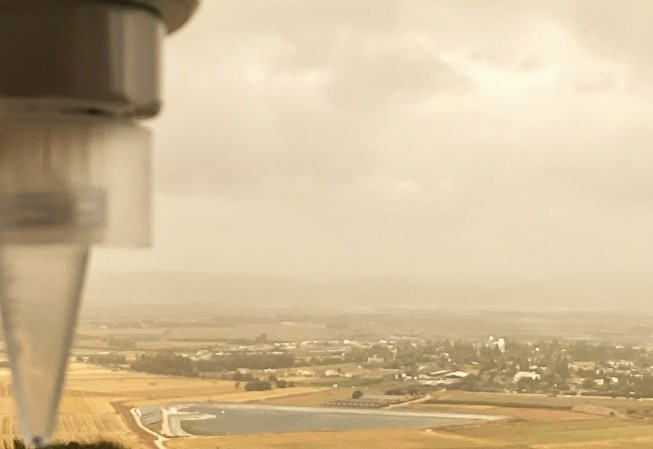Biofilms can fly- On aerotransport and Bacillus subtilis biofilms
Published in Ecology & Evolution, Microbiology, and Mathematics

The Naama Lang-Yona lab has previously demonstrated that Firmicutes, including Bacillus species, are active members of these dust storms (Hu et al., 2024) .
In our joint research, now published in Communications Earth and Environment, we discovered that these bacteria could organize themselves into multilayered microscopic biofilms within dust grains. These structures protect them from dryness, extreme radiation, and severe nutrient deprivation.
Characterizing viable and metabolically active community members changes our understanding of the interactions between the microbiome and the environment. Our research suggests that the air we breathe may contain entire communities of bacteria originating from distant regions, communities that bring with them new genetic traits that can integrate into natural ecosystems and even humans. Additionally, we found that the main isolates are related to beneficial bacteria from the Bacillus subtilis family, known for their positive applications in agriculture, construction, and medical probiotics (Povolotsky et al., 2024).
We believe the selection process during dust storms "favors" more innovative strains, a phenomenon that could directly contribute to enhancing the applications of this bacterium across various fields. Furthermore, this research alters the traditional perception of the soil microbiome by extending it to the air microbiome and broadening the repertoire of behaviors associated with the survival of these organisms.
For more detailes, read our paper:
https://www.nature.com/articles/s43247-025-02534-4

Follow the Topic
-
Communications Earth & Environment

An open access journal from Nature Portfolio that publishes high-quality research, reviews and commentary in the Earth, environmental and planetary sciences.
Related Collections
With Collections, you can get published faster and increase your visibility.
Geology of the Moon
Publishing Model: Hybrid
Deadline: Jan 31, 2026
Drought
Publishing Model: Hybrid
Deadline: Mar 31, 2026






Please sign in or register for FREE
If you are a registered user on Research Communities by Springer Nature, please sign in